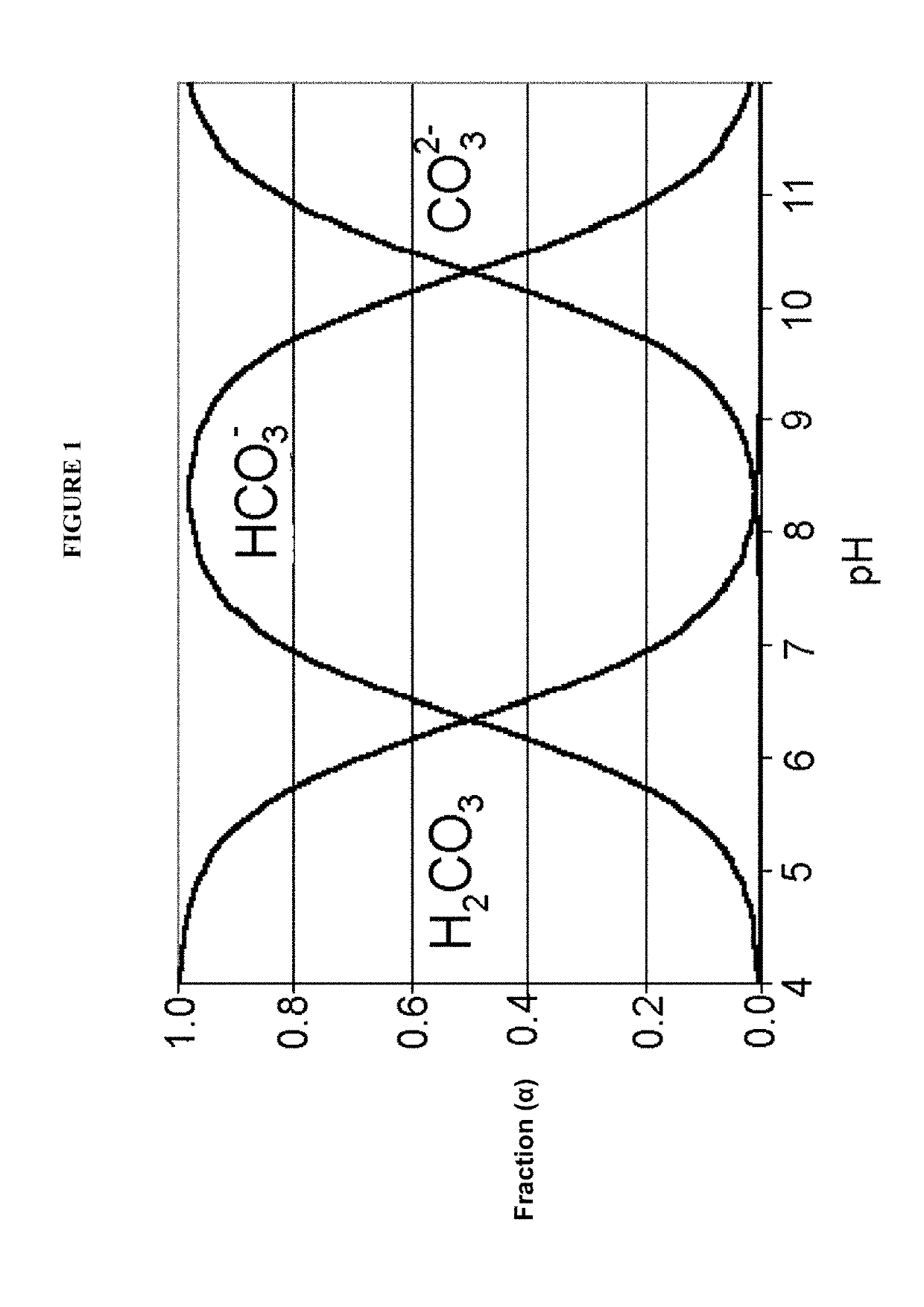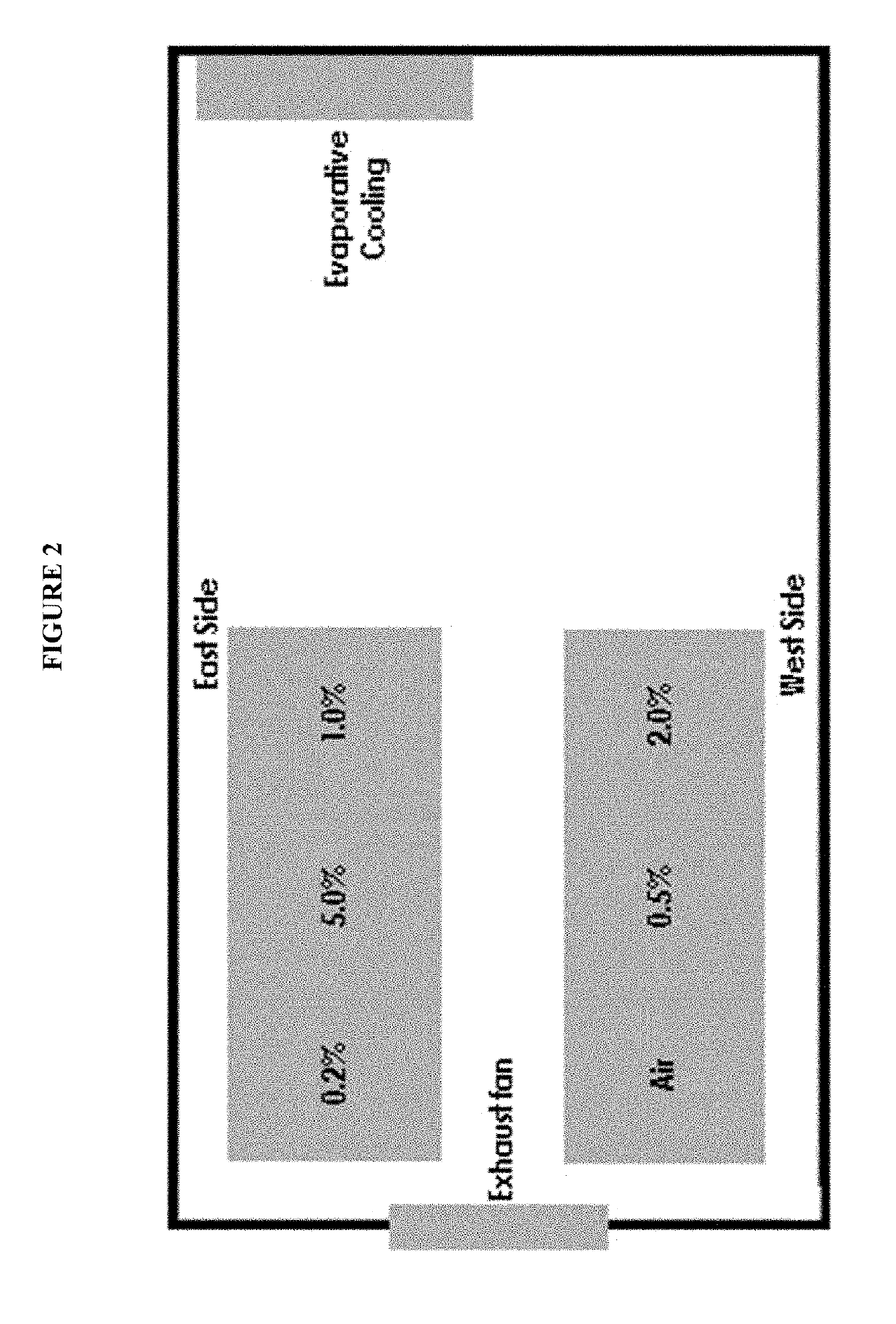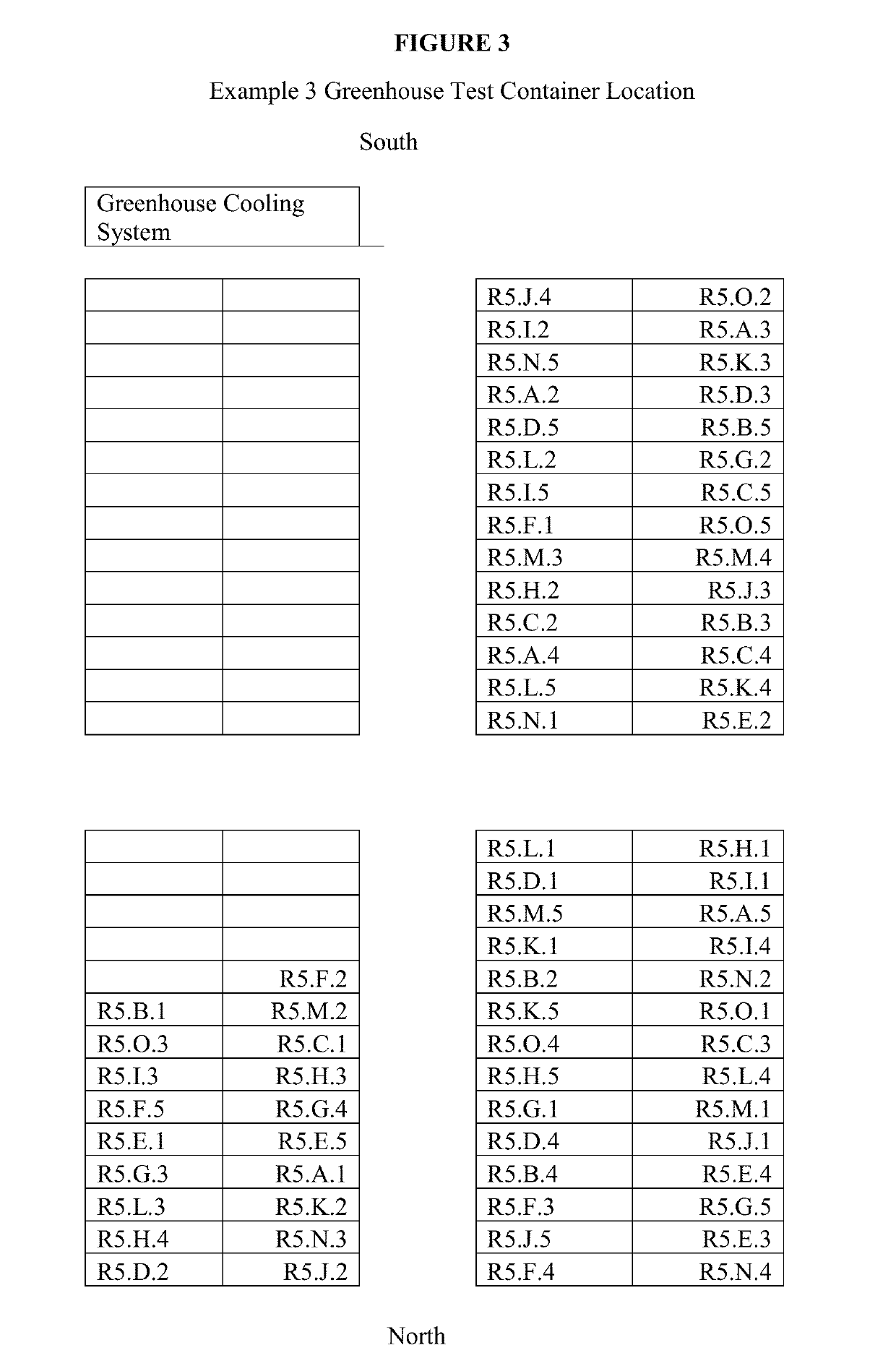Fertilizer and plant growth promoter to increase plant yield and method of increasing plant yield
a plant growth promoter and fertilizer technology, applied in the direction of nitrogenous fertilisers, alkali orthophosphate fertilisers, applications, etc., can solve the problems of loss of plant-available nitrogen, limited photosynthesis, and extremely low carbon dioxide in air, so as to improve the efficiency of nitrogen uptake and improve the nitrogen level of plant products , the effect of increasing crop yield
- Summary
- Abstract
- Description
- Claims
- Application Information
AI Technical Summary
Benefits of technology
Problems solved by technology
Method used
Image
Examples
example 1
oxide and Air Bubbled into Roots
[0094]Example 1 tests were conducted as a baseline to test whether carbon dioxide alone delivered to the roots of rice plants improves the rough rice yield and the root growth. For this example Oryza sativa long grain rice variety LaKast™ seed treated with CruiserMaxx® (an insecticide and fungicide) was carefully selected as representative of all rice grown commercially and provides an excellent model for testing commercial rice.
[0095]As will be shown by the data results for Example 1 the following are concluded:
1) At 24 days of growth, the roots for plants receiving 2.0% CO2 in air bubbled into the root zone showed a 65% increase in mass over the roots of the plants receiving either air alone or 0.5% CO2 in air (see Table 2). Hence, introducing elevated carbon dioxide to the roots improves the early formation of plant roots; 2) The average root weights at harvest were higher for all of the containers of plants receiving elevated carbon dioxide at the...
example 2
ilizer Identification Tests
[0114]The objective of the Example 2 tests was to identify solid fertilizers that benefit rice yield by supplying carbon / carbon dioxide / bicarbonate with nitrogen at the roots of the rice plants.
[0115]18.9 L (5 gallon) containers of topsoil were prepared for Example 2 by sieving the soil and then filling the containers to 10.2 cm (4 inches) from the top. The soil used for Example 2 was tested for pH, phosphorus, potassium, calcium, magnesium, sulfur, sodium, iron, manganese, zinc, copper, boron, total nitrogen, total carbon, and organic matter content by loss on ignition (LOI) analysis. The results of this soil testing are presented in Table 1 and labeled Sample A-2. Due to the low soil test value for phosphorus (33.3 mg / kg), starter phosphorous fertilizer was applied to each container by mixing 1.7 g of TSP into the top 7.6 cm (3 inches) of soil. Starter fertilizer for zinc was also applied to each container as 0.2 g of zinc sulfate due to the low zinc soi...
example 3
d Rice Tests with Solid Fertilizer
[0126]To check the benefits of using solid nitrogen based fertilizer with carbon dioxide supplied to the roots, fifteen fertilizer formulation were made into tablets and tested in five replicates. The percent nitrogen in the chemicals used as nitrogen sources to make the Example 3 fertilizer tablets was measured using a carbon and nitrogen elemental analyzer, LECO CN628®, and the results are presented in Table 8. The nitrogen level in each material was as expected based on the chemical formula of the material. The fertilizer formulations for each solid fertilizer is shown in Table 9A and Table 9B. The solid fertilizer tablets for Example 3 were made using a Stokes model #900-519-2® tablet press with a 1.9 cm (0.75 inch) die that produced nearly spherical tablets. Each tablet weighed between 2 and 3 grams.
TABLE 8Percent Nitrogen in Starting Materials for Example 3AverageMeasuredExpectedSample% Nitrogen% Nitrogen% NitrogenGround Urea46.80946.6746.6246...
PUM
| Property | Measurement | Unit |
|---|---|---|
| diameter | aaaaa | aaaaa |
| energy | aaaaa | aaaaa |
| surface area | aaaaa | aaaaa |
Abstract
Description
Claims
Application Information
 Login to View More
Login to View More - R&D
- Intellectual Property
- Life Sciences
- Materials
- Tech Scout
- Unparalleled Data Quality
- Higher Quality Content
- 60% Fewer Hallucinations
Browse by: Latest US Patents, China's latest patents, Technical Efficacy Thesaurus, Application Domain, Technology Topic, Popular Technical Reports.
© 2025 PatSnap. All rights reserved.Legal|Privacy policy|Modern Slavery Act Transparency Statement|Sitemap|About US| Contact US: help@patsnap.com



